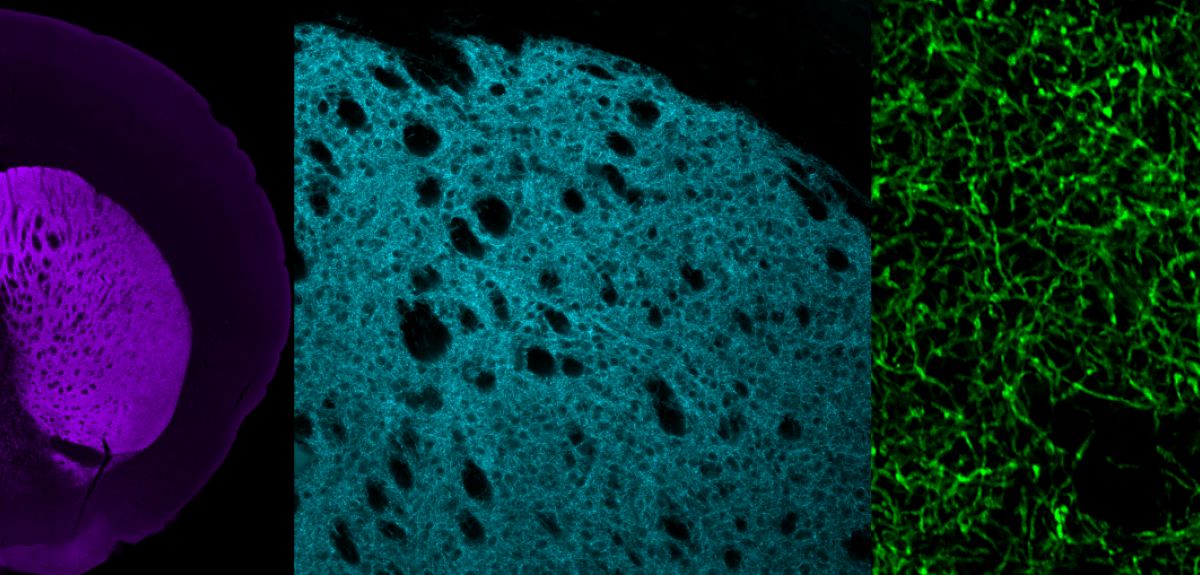
Oxford-led team given £6.6m to map uncharted networks in the progression of Parkinson’s
A major new $9 million (£6.6 million) University of Oxford-led project funded by the Aligning Science Across Parkinson’s (ASAP) initiative will map the original brain circuits vulnerable to Parkinson’s on an unprecedented scale. It is the only UK-led ASAP project this year, and the first ever to be led by Oxford.
The project is a landmark collaboration between Stephanie Cragg, Richard Wade-Martins and Peter Magill at Oxford; Mark Howe at Boston University; and Dinos Meletis at the Karolinska Institute, as well as collaborators Yulong Li at Peking University and Michael Lin at Stanford University.
ASAP is a coordinated research initiative to advance targeted basic research for Parkinson’s. Its mission is to accelerate the pace of discovery and inform the path to a cure through collaboration, research-enabling resources, and data sharing. The Michael J. Fox Foundation for Parkinson’s Research is ASAP’s implementation partner and issued the grant.
The Oxford-led team will aim to fully map out a key set of the neuronal circuitry relevant to Parkinson’s. To do so, they will (i) assess how circuit activity changes during progression of Parkinson’s in vulnerable compared to resistant circuits and (ii) define how dysfunction in vulnerable circuits relates to disease symptoms.
In particular, the team will focus on studying the circuits that govern dopamine output. The loss of dopamine in Parkinson’s is understood to be primarily responsible for increasing inability to select, tune and produce movements.
Lead researcher Professor of Neuroscience Stephanie Cragg said: ‘We know dopamine neurons die, and that the messages they transmit on to other cells are lost in Parkinson’s, but we don't really understand how all the other interacting circuits contribute to that and either make it worse or attempt to offset it. So we are looking to identify the sequence of dysfunction.’
Strikingly, research has shown that affected dopamine neurons have uniquely large axon arbours, the main branching structures stemming from the neuron cell bodies. Professor Cragg said: ‘They form the most branched of all central nervous system neurons documented to date, which makes their physiology particularly interesting. It means that these axons have huge biological relevance in dopamine signalling because a large number of other systems can talk to these axons with the potential to powerfully transform dopamine output. The message emerging from dopamine axons can be tweaked along the way by lots of different things acting on these incredible axons.
‘With more than 99 percent of the neuron comprising these unusually large axon trees, we focussed our ASAP grant on systematically defining the neuromodulators and circuits that are talking to dopamine axons. We will also compare whether these mechanisms are different in brain regions that are dying in Parkinson's compared to brain regions that are resistant, to see if there are circuits that might make good targets for future therapies that could fix the vulnerable neurons but leave the resistant ones unaffected.’
With the advent of new and improved cutting-edge technologies that have revolutionised neuroscience research, the collaborative team will together have unprecedented ability to research how these circuits talk to each other and become dysfunctional in disease, at levels spanning from molecules to behaviour.
The ASAP funding will enable the team to work on an unprecedented international collaborative scale. The ASAP Collaborative Research Network of funded scientists will work together by interacting at regular virtual meetings, sharing unpublished data and protocols, and publishing in gold standard open access journals.
Ekemini Riley, PhD, ASAP Managing Director, said: ‘Each team selected for the Collaborative Research Network brings unique expertise and perspective to ASAP’s mission of tackling key knowledge gaps in disease understanding through open science. We are proud to partner with the University of Oxford on this innovative and impactful project that will position the field closer to new treatments for the millions living with and at risk of Parkinson’s disease.’
 Expert Comment: What US action in Venezuela could unleash — regionally and globally
Expert Comment: What US action in Venezuela could unleash — regionally and globally
 Expert Comment: Why cherish the analogue in a digital age?
Expert Comment: Why cherish the analogue in a digital age?
 New Year Honours 2026
New Year Honours 2026
 New study estimates NHS England spends 3% of its primary and secondary care budget on the health impacts of temperature
New study estimates NHS England spends 3% of its primary and secondary care budget on the health impacts of temperature